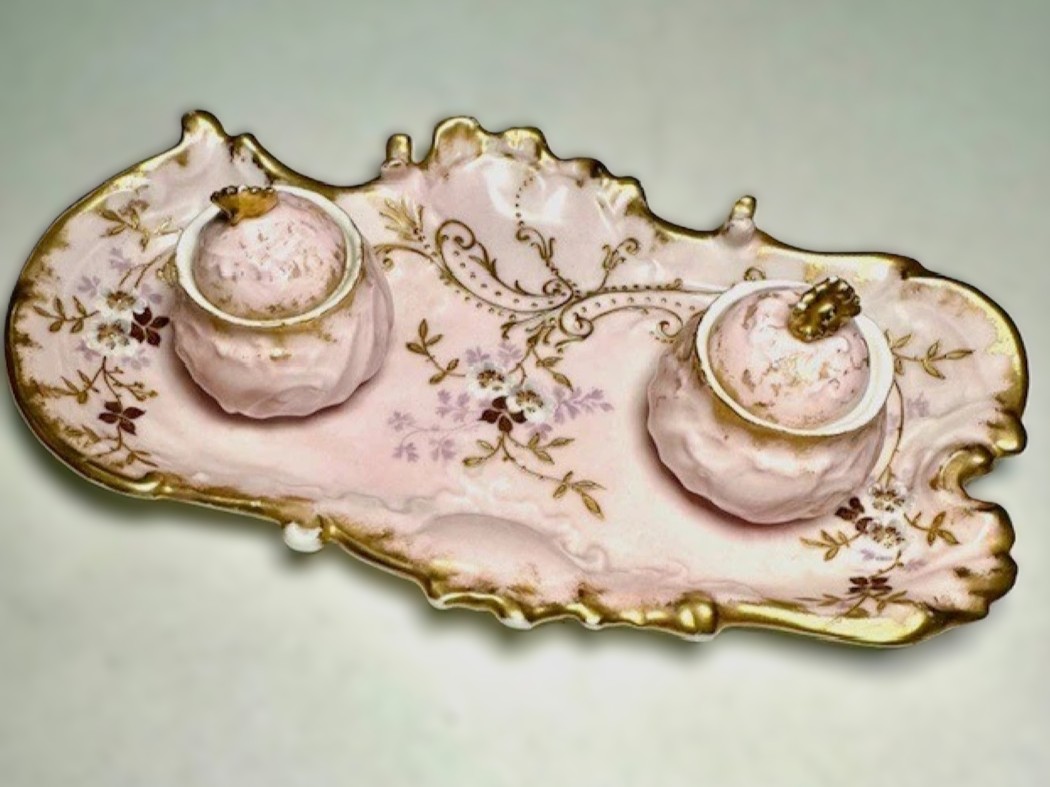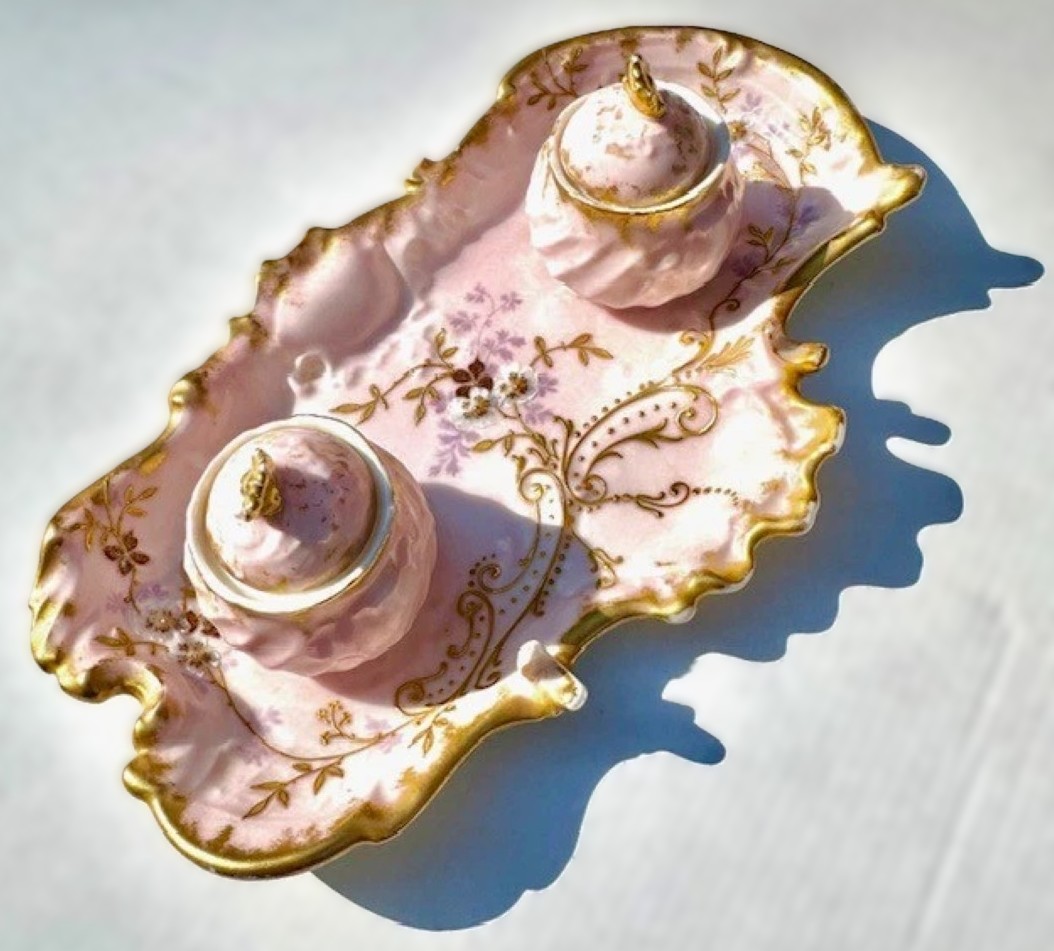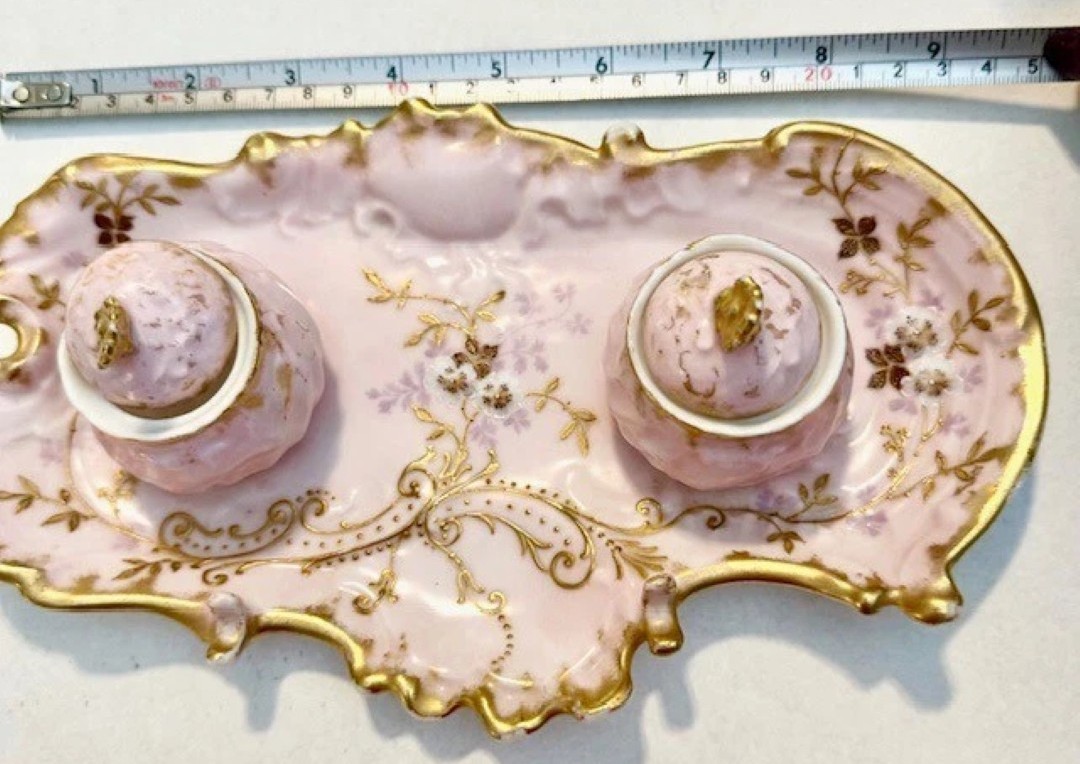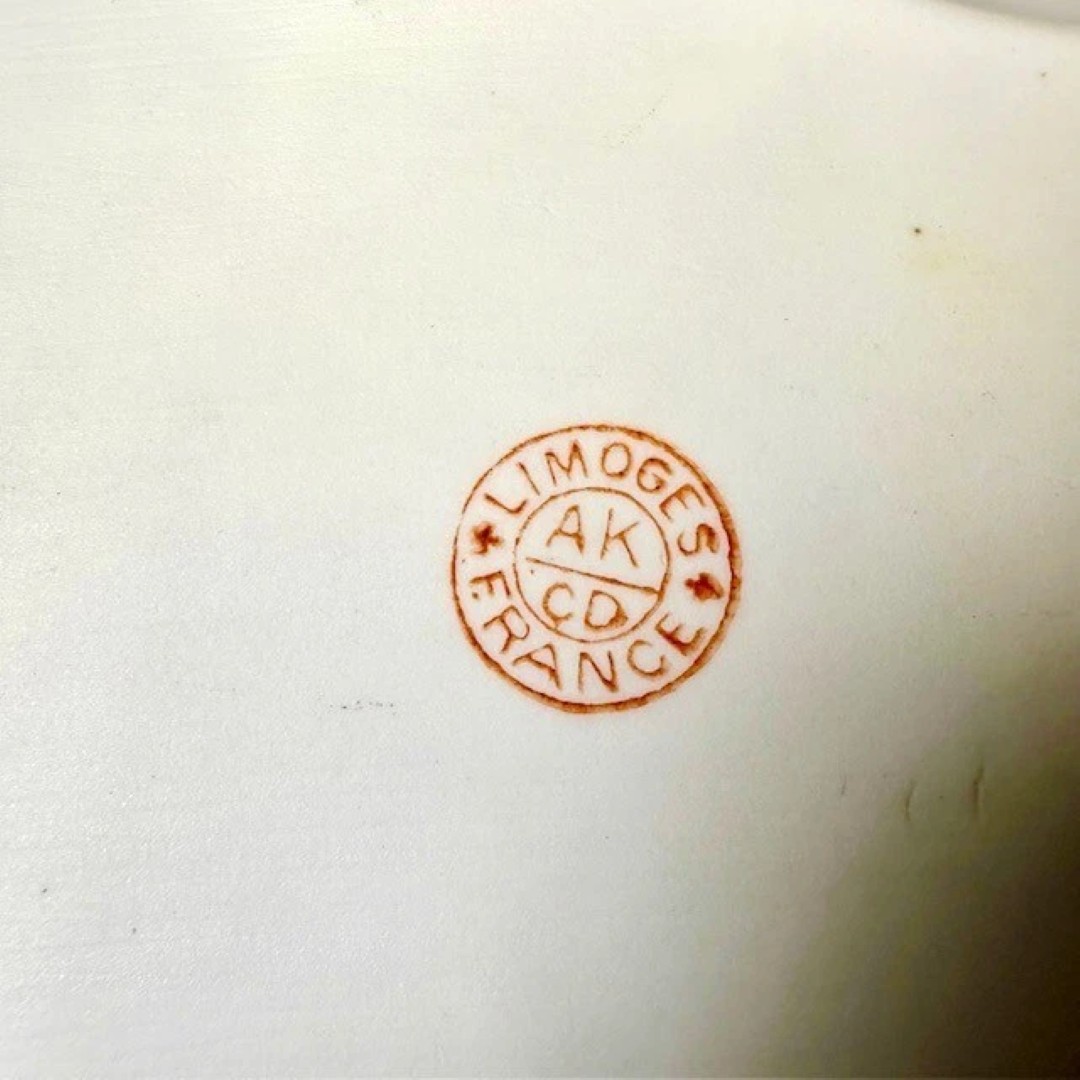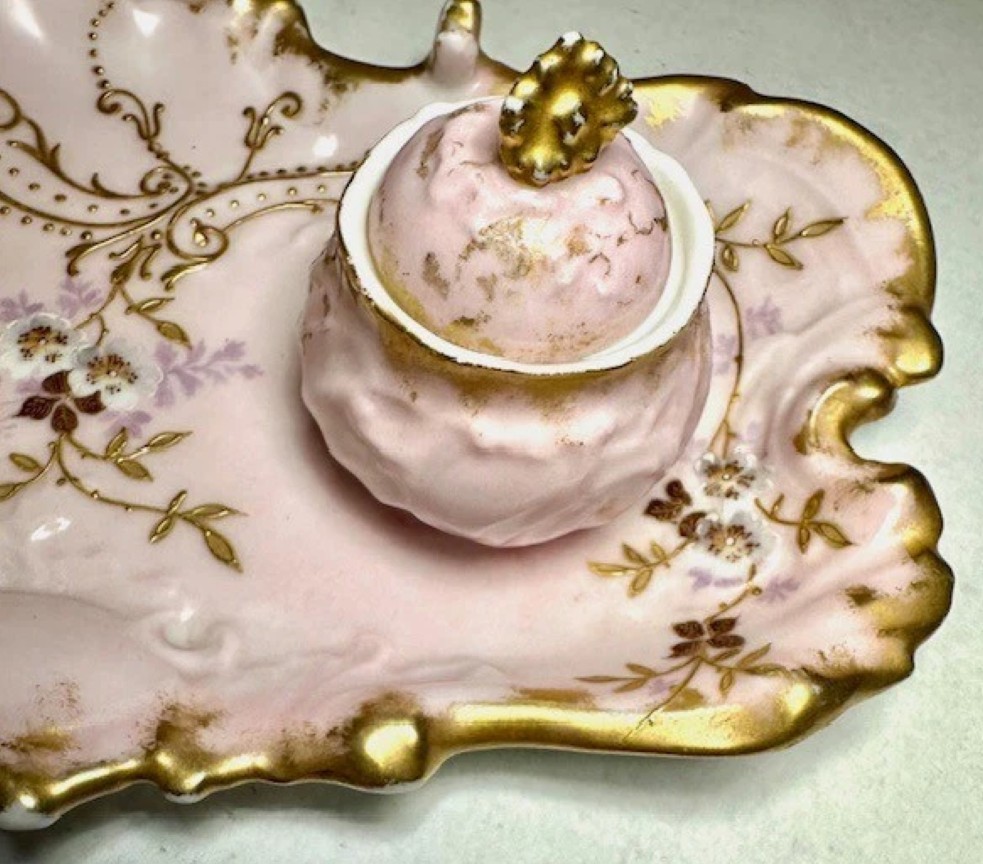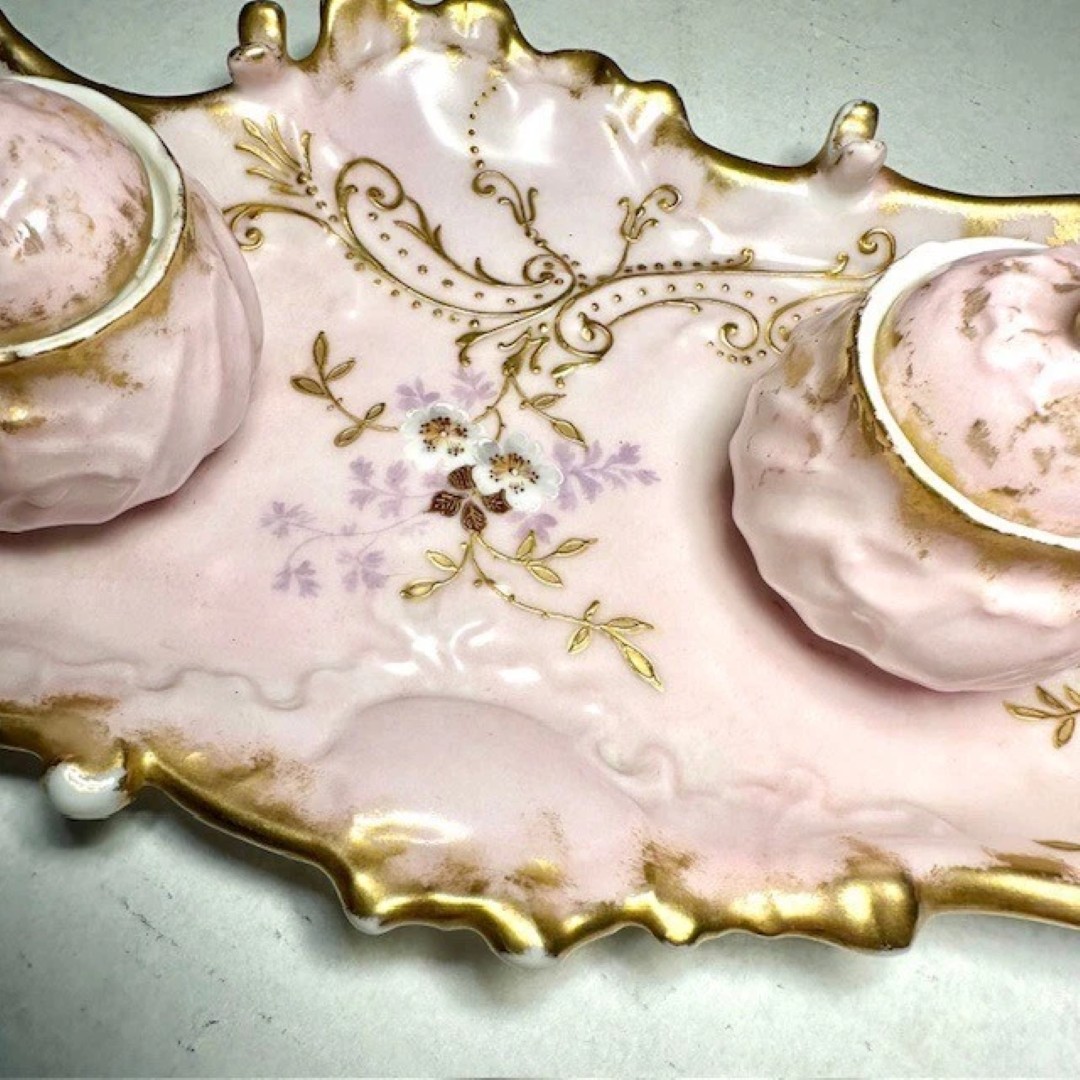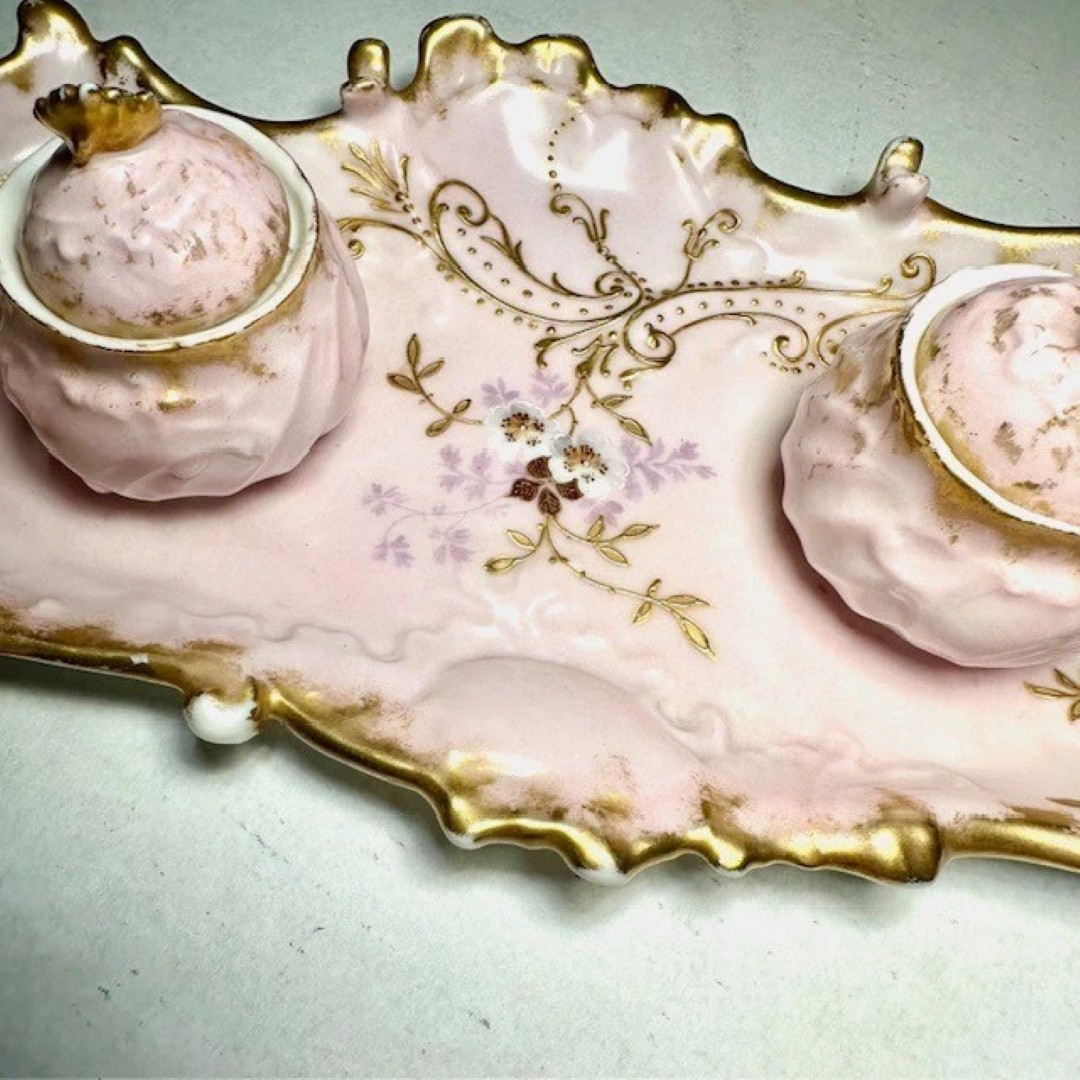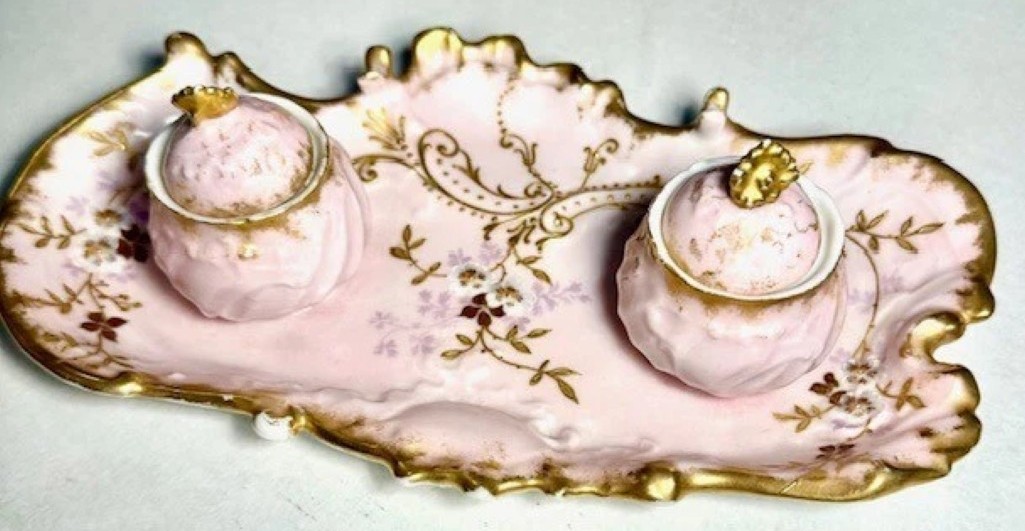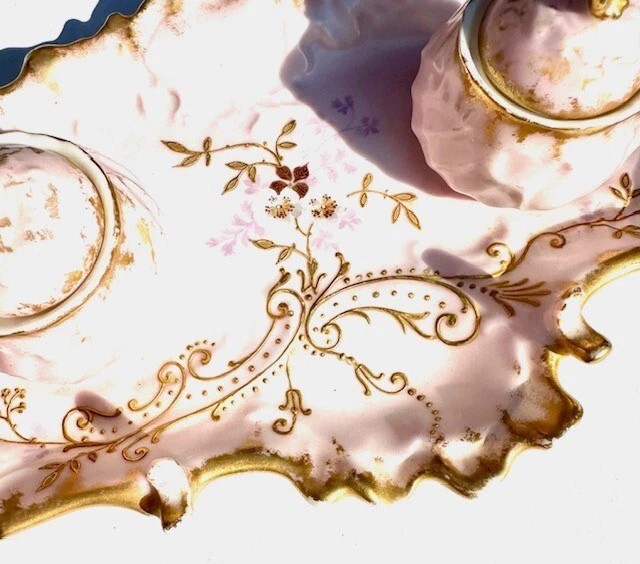
Inkipedia
Limoges Porcelain Double Inkstand
| Categories | Ceramics/Porcelain "Named" Makers |
| Material | Porcelain |
| Markings | See Narrative |
| Manufacturer | Limoges |
| Origin | France |
| Date or Era | circa 1900 |
| Measuring | 9 ½” across |
Description of the Inkstand:
- Material and Form: The inkstand is made from fine white porcelain. Its form is distinctly Rococo in style, characterized by fluid, asymmetrical curves, raised relief edges, and elegant flourishes.
- Double Inkwells: The inkstand features two integrated inkwells with their original porcelain lids.
- Decoration:
- Hand-Painted Floral Motifs: The surface of the inkstand is adorned with exquisite hand-painted floral motifs. These flowers appear in delicate, naturalistic colors, pinks and violets.
- Hand-Applied Gold Scrollwork: Complementing the floral painting is intricate hand-applied gold scrollwork. This gilt decoration follows the contours of the inkstand, highlights the raised relief edges, and forms elaborate flourishes. The gold is thickly applied, giving it a tactile quality.
- Pen Holder: The front edge of the base incorporates raised brackets specifically designed to hold a pen.
The Mark and Confirmation:
The inkstand is stamped underneath with an “AK/CD Limoges France” mark.
- Confirmation of Manufacturer: This mark signifies A. Klingenberg & Charles Dwenger.
- Dating: The mark “AK/CD Limoges France” dates this inkstand to the period of approximately 1880 to 1910. This timeframe aligns perfectly with the Rococo Revival style, which was highly popular during the late 19th and early 20th centuries, as well as the known operating period of this partnership.
More Information about A. Klingenberg, Charles Dwenger, and Limoges Porcelain:
- Limoges Porcelain: Limoges, a city in west-central France, has been a renowned center for porcelain production since the late 18th century. The discovery of kaolin (a key ingredient for hard-paste porcelain) deposits nearby in the 1760s led to the establishment of numerous factories. Limoges became synonymous with high-quality porcelain, known for its translucence, intricate molds, and exquisite hand-painting and gilding. Unlike Sèvres, which was largely state-owned, Limoges was a hub for many private factories that thrived on export markets, particularly to the United States.
- A. Klingenberg & Charles Dwenger (AK/CD):
- Alfred Klingenberg and Charles Dwenger were German businessmen who established their porcelain decorating and export company in Limoges, France, around 1880.
- Their primary business model was not necessarily to produce the raw porcelain blanks themselves (though some factories did integrate this), but rather to purchase “blanks” (undecorated porcelain pieces) from various Limoges factories and then decorate them in their own workshops. This was a common practice in Limoges, allowing for specialized decorators and exporters.
- They were known for their high-quality decoration, often employing skilled artists for hand-painting and applying luxurious gold embellishments, as seen on this inkstand. Their designs catered to the tastes of the American and European markets, with many pieces featuring Rococo Revival, floral, and classical themes.
- The “AK/CD” mark was used during their partnership. The company continued in various forms after the initial partnership, with Klingenberg eventually taking sole control or new partnerships forming. The partnership specifically dissolved around 1910, which gives a solid end-date for this particular mark.
Sold for $150 in June 2025
Content disclaimer. The information posted is the owner’s best knowledge and may not have been vetted by the SOIC. We welcome comments, corrections, and additions, working to make our website information comprehensive and accurate.
Join the Society of Inkwell Collectors (SOIC) – it’s free!
Founded in 1981 as a non-profit organization,
we are documenting inkwells (and accessories).
We’re here to help and inform!
